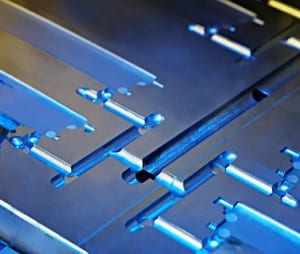Reinvent or die
Australian onshore manufacturing is in decline. It’s not just Toyota, Holden and Ford. Electrolux, Simplot, Caterpillar and Alcoa have also announced job cuts in the last six months. Media reports talk about the end of an industry. Even the optimists agree that Australian manufacturing needs to reinvent or die.
Yet is it as simple as onshore versus offshore manufacturing? This article from MakeZine outlines the experience of a US startup deciding where to locate manufacturing and how to handle risk. It’s long, but full of thoughtful, relevant points. We’ve noted a few here with our comments:
Onshore and offshore manufacturing can work together
‘SOME components will be sourced from China. There are some parts for which quality isn’t critical, the savings are enormous and risk is low.’
‘SOME assembly will take place in China. [Specific parts] are both small and simple, do not have a lot of parts, have very large tolerances for error and are much cheaper than assembling in the United States (by a factor of 10).’
‘The [critical component] will be assembled in the United States by Universal Electronics less than an hour away… … This is the part that cannot fail, must not have rejects and cannot be stolen.’
This is really important. So often, the debate is polarised. Offshore manufacturing is seen as taking local jobs. But what if only some parts are sourced offshore? Cheaper components can help keep the cost of the total end product low enough to compete – this keeps the factory in business and protects at least some local jobs.
Look at that cost comparison for the sub-assembly too. Cheaper by a factor of ten. Imagine if you could cut the cost of a process by 90%!
Moulding and tooling is a great jump-off point for offshore manufacturing
‘They’re better at making injection molds than we are in the US.’
‘They make molds to one of two standards: American standards and Chinese standards.’
The second statement might sound alarm bells, but the author continues:
‘American molds… … are the BMW s of molds… …last for hundreds of thousands of parts… …extremely accurate and filled with features like cooling lines.’
‘The Chinese standards are still good, but the molds often fit into a common base size, don’t always have the cooling lines…’
Once again, the author includes cost comparisons. $30-40K for a Chinese mould versus over $100K for one made in the USA. Could your business save $50K plus of sunk cost?
Daren Horvat, (Hornet Group Managing Director) comments,
‘I know Australian moulding companies who want to make a really good quality mould, something which will last for millions and millions of parts. But if the total product run is only a few hundred thousand, what’s the point? All it does is add cost, which has to go onto the end cost of all the products.‘
This is one case where the definition of ‘acceptable quality’ needs to be examined case-by-case. While the product quality has to be Western standard, perhaps you’re only servicing the relatively tiny Australian market rather than the US or Europe. If so, does the mould quality need to be to the same standard?
Interestingly, Chinese companies often have moulding and tooling capabilities as well as parts production capability. In Australia, the two are generally handled by different businesses. There are opportunities for both.
Australian manufacturers could consider sourcing moulds directly from China.
Australian moulding companies could source and build a relationship with a supplier in China. They could analyse the expected use of each mould and recommend onshore or offshore manufacturing based on that data. What a great way to add value by understanding your customers and using your expertise to save them money!
‘The real cost of cheapness’
‘The costs savings is a gamble; will you get a legitimate part that will pass your quality control and survive in your users hands long enough to get past the warranty date?
‘It is highly likely that you will have to make at least two trips to China; one to find a factory and one to manage it when the assembly line is being set up and production starts.’
These are real and valid concerns. Addressing and managing them is central to our work at Hornet. We give you the savings of offshore manufacturing without the risks.
By using Hornet, you avoid the cost of trips to China. We have our own staff and offices on the ground in China. We pay them, so they are independent of the factories they commission for projects. They represent our interests and those of Hornet Group clients. They source and audit factories at the start of a project. They also manage quality control as necessary during production and conduct pre-shipment inspections.
***
It’s ironic that the US and Europe are seeing a current trend to ‘reshoring’ – replacing offshore manufacturing with onshore. The situation is not so easy for Australia – we are further away and have a smaller market. So we need to think and work smarter! Just as China, the world’s manufacturing giant, has to look beyond cheap labour and reinvent its industry, Australia should consider how to combine both onshore and offshore manufacturing.
Meanwhile, thanks to Portable Scores for a fantastic article and we wish you all the best for the business!
